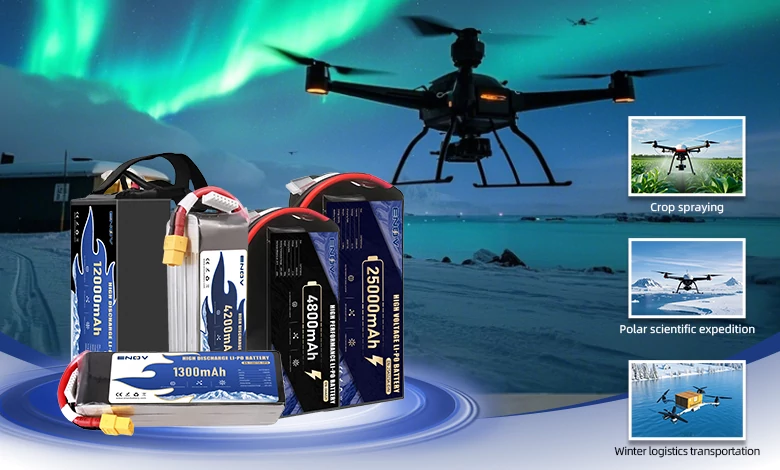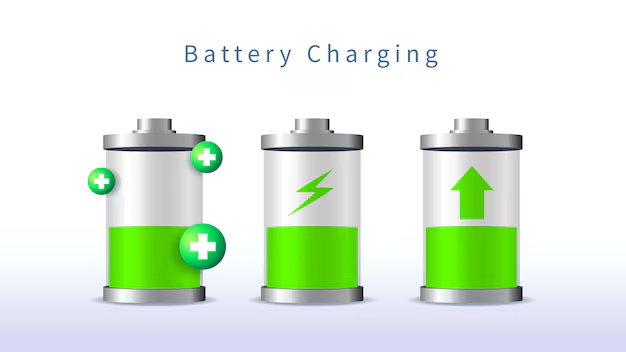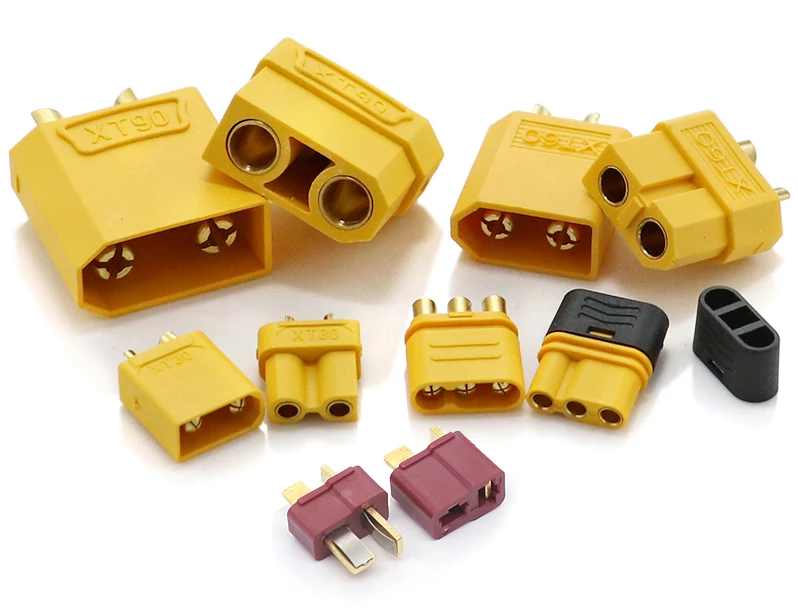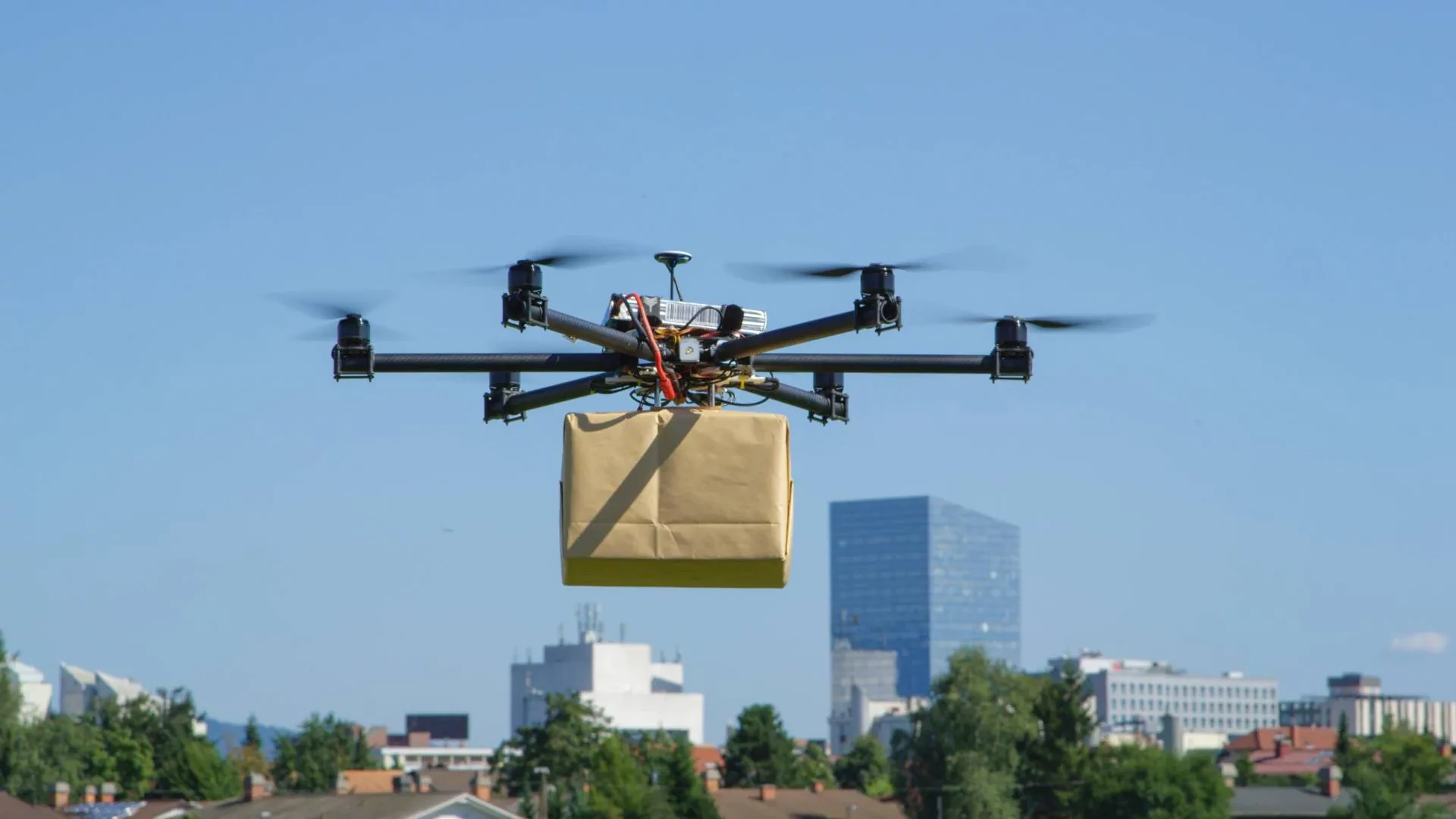Recommendations for the Systematic Implementation of Drone Teaching

ENOV High-Energy drone batteries power industrial and commercial drones. Delivering 220–320 Wh/kg energy density, they enable long flight times (30+ mins) and support fast charging (2C). Perfect for aerial photography, surveillance, and delivery drones.
With the widespread application of drone technology in agriculture, surveying and mapping, emergency rescue, and other fields, its value in educational scenarios has become increasingly prominent. It not only meets the needs of STEM (Science, Technology, Engineering, Mathematics) education and cultivates students’ practical and innovative abilities, but also provides professional talents for the industry. The following provides systematic recommendations for the implementation of drone teaching from ten dimensions, including preliminary preparation, curriculum design, teaching implementation, and safety management, taking into account different educational stages and teaching objectives (interest cultivation / vocational training/competition preparation).
I. Preliminary Preparation: Clarifying Directions and Integrating Resources
Preliminary preparation is the foundation for the implementation of drone teaching. A closed-loop process of “demand positioning – budget planning – resource integration” should be formed to avoid blind investment.
1. Demand Positioning and Student Situation Analysis
First, clarify the core teaching objectives and the characteristics of the target audience to ensure curriculum adaptability:
① Classification of Training Directions
Popular Science Introduction: Focus on stimulating interest and helping students understand the basic principles and operations of drones.
License Acquisition: Align with certifications such as UTC (China Air Transport Association), AOPA (Aircraft Owners and Pilots Association of China), or FAA (Federal Aviation Administration) Part 107 to pave the way for career development.
Industry Application: Focus on specialized skills such as aerial photography, agricultural plant protection, power inspection, and emergency rescue.
Competition Specialty: Strengthen competitive abilities for events such as the WFA (World Drone Award), World Drone Competition, and municipal-level scientific and technological innovation competitions.
② Key Points of Student Situation Survey
Student Age Group: Simplify operations for primary and secondary school students, while deepening programming and development content for college students.
Technical Foundation: Whether students have experience in programming / electronic device operation.
Total Class Hours: Short-term interest classes vs. long-term courses.
Disposable Funds: Affect the level of equipment procurement.
2. Budget Planning and Cost Estimation
The budget should cover the entire chain of “equipment – maintenance – insurance – teaching materials” to avoid subsequent funding gaps:
Core Expenditure Items
Equipment Costs: Purchase equipment in grades according to teaching levels (entry-level / training-level / professional-level), accounting for 60%-70% of the budget.
Supporting Costs: Software (simulators, data processing tools), maintenance consumables (spare batteries ≥ number of students × 1.5, propellers, chargers).
Other Costs: Third-party liability insurance (essential for institutions), student accident insurance, venue rental/sharing fees, certified training materials fees, task props (landing pads, pylon rings).
Budget Optimization Principles
Prioritize ensuring safety and core equipment. In the early stage, reduce the purchase of professional-level drones and lower costs through sharing or simulation teaching.
3. Resource Preparation List
Equip resources in terms of “equipment – venues – personnel” to ensure the smooth progress of teaching:
① Equipment Configuration (Classified by Level)
Entry-level: Choose models with a weight of less than 250g or below 2kg, which have low crash risk and controllable costs, suitable for zero-based practical operations.
Training-level: Equipped with protective frames to reduce collision damage, used for route flight and task training.
Professional-level: Industrial models that support infrared thermal imaging and RTK (Real-Time Kinematic) positioning, suitable for specialized teaching such as power inspection and precision surveying, and mapping.
Essential Accessories: Portable charging stations (for battery life in field teaching), reflective positioning blankets (for take-off and landing positioning), disassembly and assembly tools (for maintenance teaching), safety nets/barriers (for indoor protection), first-aid kits (for emergency handling).
② Venue Requirements
Indoor: Gymnasiums, empty classrooms, used for hovering training and programming debugging, not affected by weather.
Outdoor: Lawns of ≥ 30m × 20m, with no obstacles and few people, avoiding no-fly zones, high-voltage lines, and trees. Before flight, check airspace classification and temporary restrictions (NOTAM / TFR).
③ Personnel Configuration
Instructors: ≥ 2 certified personnel (holding CAAC (Civil Aviation Administration of China)/FAA instructor certificates or AOPA multi-rotor beyond visual line of sight certificates). Specialized fields such as agricultural plant protection require more than 2,000 mu of industry experience.
Teaching Assistants: 1 person, responsible for safety inspections and equipment distribution. During the practical operation stage, they need to cooperate with instructors, with 1 pilot-in-command and 1 observer.
II. Curriculum System Design: Progressive Staging and Module Integration
The curriculum should take into account “systematicness – practicality – interdisciplinary nature”, be divided into stages according to difficulty, divided into modules according to types, and at the same time connect with multi-disciplinary knowledge.
1. Phased Teaching Planning
Design the curriculum according to the improvement of students’ abilities, and clarify the class hours and objectives of each stage:
① Primary Stage (8-12 Class Hours)
Core Content: Drone history and application scenarios, component functions (airframe/motor / remote controller), basic flight principles (take-off and landing/hovering / tail-to-pilot hovering), safety regulations (basic provisions of CAAC/FAA, no-fly zone identification).
Objective: Establish basic cognition, master safe operation specifications, and be able to independently complete simple real-machine take-off and landing.
② Intermediate Stage (20-30 Class Hours)
Core Content: Aerial photography skills (composition, gimbal control), industry cases (surveying and mapping processes, plant protection route planning), simple maintenance (battery maintenance, fault diagnosis), mission flight (rectangular routes, aerial photography creation).
Objective: Possess basic mission execution capabilities and understand the application logic of drones in different industries.
③ Advanced Stage (Specialized Training)
Core Content: Programming control (DroneKit/PX4 development, Python programming for automatic cruise), operations in complex environments (night flight, wind resistance training, infrared thermal imaging analysis), certification preparation (knowledge points of FAA Part 107, UTC/AOPA examination syllabus).
Objective: Master professional skills and be able to meet the needs of industry positions or competitions.
2. Modular Content Structure
Adopt a three-dimensional module of “theory + practical operation + expansion” to realize the combination of “learning – practice – application”:
① Theoretical Module
Aerodynamics (principles of lift/thrust/drag), the impact of meteorology on flight (wind speed/precipitation), airspace classification and authorization procedures, flight control system principles, safety ethics (privacy protection, public safety).
② Practical Operation Module
Basic Level: Simulator training (VelociDrone/DRL Simulator, accounting for 70% of basic class hours) to reduce real-machine wear and tear.
Advanced Level: Real-machine practice in small venues (hovering, short routes).
Application Level: Field operations (aerial survey data collection, 3D modeling).
③ Expansion Module
3D modeling (ContextCapture), data processing (Pix4D orthophoto stitching), agricultural NDVI (Normalized Difference Vegetation Index) vegetation monitoring, use of emergency rescue throwers, and coordinated cluster flight.
3. Interdisciplinary Integration Design
Break down disciplinary barriers and make drones a “tool carrier” for multi-disciplinary teaching:
Science Field: Use drones to monitor landscapes and ecology, study environmental characteristics; conduct aerodynamics experiments to verify the relationship between lift and propeller speed.
Mathematics Field: Use drones to visualize geometric shapes (calculate area / perimeter), measure flight speed (state-space modeling), and analyze data errors (aerial survey image stitching accuracy).
Language Arts: Write narrative articles on community traffic safety, and create papers on the theme of drone ecological applications.
Technology Field: Learn drone programming (automatic cruise path design), electronic component maintenance, and VR simulation technology (high-risk scenario rehearsal).
III. Teaching Implementation Strategies: Innovative Methods and Hardware Adaptation
Combine students’ cognitive characteristics and technical attributes, and adopt a model of “hardware adaptation + method innovation” to improve teaching effectiveness.
1. Hardware Configuration and Adaptation Principles
Different teaching stages need to match different hardware to balance “cost-effectiveness – safety – functionality”:
Entry Stage: Prioritize low-cost, small-sized models with light weight and less damage in case of crash, suitable for zero-based students to build confidence.
Training Stage: Equip with protective frames to reduce damage to the airframe caused by collisions, which can be used for repeated route flight practice.
Professional Stage: Adopt industrial-grade models that support high-precision positioning and multi-sensors (infrared, lidar) to meet the teaching needs of specialized skills.
Common Requirements: All equipment must be tested in advance to ensure battery life and stable remote controller signals, and spare batteries must be fully charged for backup.
2. Application of Innovative Teaching Methods
Break through the traditional “lecture + demonstration” model and design interactive teaching with “students as the center”:
Task-Driven Teaching: Set up situational tasks, such as “campus material delivery” and “community topographic surveying and mapping”, allowing students to master operating skills and theoretical knowledge while solving problems.
VR and Simulation Rehearsal: Use the DRL Simulator to simulate high-risk scenarios such as strong winds and complex terrain. Students first become familiar with response methods through virtual training before conducting real-machine operations.
Project-Based Learning: Divide students into groups of 3-4 (with roles: pilot/observer/ground crew/data analyst) to complete full-process projects such as “campus 3D modeling” and “farmland NDVI monitoring” to cultivate teamwork ability.
Hierarchical Progressive Teaching: Divide students into Group A/B according to their foundation. Group A (with a good foundation) practices FPV (First-Person View) racing flight, while Group B (with a weak foundation) consolidates basic operations such as hovering, take-off, and landing.
Competitive Incentive Teaching: Organize campus drone festivals, set up pylon racing, precision landing challenges, and aerial photography exhibitions to stimulate students’ competitive awareness and interest.
IV. Special Scene Teaching: Group-Adapted and Specialized Design
Design differentiated teaching plans for different teaching objects and industry needs.
1. Youth Enlightenment Teaching (Primary and Secondary School Stage)
Equipment Selection: Use Robomaster TT (supporting Python programming) and DJI Tello programming version, which are easy to operate and have high safety.
Teaching Design: Combine STEAM education to carry out drone physics experiments (such as gyroscope principle demonstration) and programming games (automatic pylon 绕行), avoiding complex theories.
Safety Adaptation: Prioritize indoor flight and equip with safety nets; simplify the operation process and emphasize basic specifications such as “checking the battery before starting up and not exceeding the height during flight”.
2. Industry-Oriented Training (Secondary Vocational Schools / Colleges / Enterprises)
Power Inspection Specialty: The teaching content includes infrared thermal imaging analysis (identifying line faults), inspection route planning, and safe equipment operation.
Agricultural Plant Protection Specialty: Explain the principles of NDVI vegetation monitoring, calculation of spray dosage for plant protection drones, and obstacle avoidance for field routes.
Emergency Rescue Specialty: Train on the installation of throwers (for delivering first-aid supplies), coordinated cluster flight, and design of search and rescue routes in complex terrain.
Surveying and Mapping Specialty: Focus on teaching the application of RTK positioning, aerial survey data collection, Pix4D data processing, and error control.
3. Adaptation to Different Educational Stages
Primary and Secondary Schools: Focus on interest cultivation, emphasize “learning through play”, and stimulate STEM interest through experiments and simple tasks.
Secondary Vocational Schools: Focus on vocational skills, align with the needs of industry positions, and strengthen practical operations and license preparation.
Colleges and Universities: Focus on professional capabilities, including programming development, interdisciplinary projects (such as engineering/mechatronics), and scientific research applications (such as environmental monitoring/heritage protection.
V. Safety Management System: Compliance as the Foundation and Multiple Protections
Safety is the core prerequisite for drone teaching, and a system should be built from three aspects: “regulatory compliance, technical protection – emergency handling”.
1. Legal and Airspace Compliance Management
Clarify the regulatory requirements for different scenarios to avoid legal risks:
Key Points of Regulatory Cognition
Indoor Flight: No FAA Part 107 certification or CAAC license is required, and indoor areas are not part of the national airspace.
Outdoor Flight: Students do not require a license for recreational flight, while teachers must hold an FAA Part 107 Remote Pilot Certificate or a CAAC Instructor Certificate for teaching purposes (non-recreational).
Airspace Restrictions: Check NOTAM (Notice to Air Missions) and TFR (Temporary Flight Restriction) in advance, and avoid no-fly zones such as airports and military management areas.
Airspace Authorization Process
If outdoor teaching is to be carried out, apply for airspace authorization through LAANC (Low Altitude Authorization and Notification Capability) or FAA DroneZone, and register the flight plan (time/location/model/mission).
2. Multiple Safety Protection Mechanisms
Reduce risks throughout the process of “pre-flight inspection – in-flight control – post-event emergency response”:
① Pre-Flight Three-Inspection System
Check 12 items before each flight and fill in the inspection form:
Battery power and connection status; 2. Propeller installation firmness; 3. GPS signal strength; 4. Remote controller connection; 5. Electronic fence setting; 6. No obstacles in the flight airspace; 7. Wind speed ≤ Level 5; 8. Student protective equipment (such as gloves); 9. First-aid kit backup; 10. Emergency return function test; 11. Observer in place; 12. Flight plan filing.
② Technical Protection Measures
Set up an electronic fence with a height limit of 120 meters, automatically identify no-fly zones, and enable functions such as “low-battery automatic return” and “signal loss return” to prevent drones from losing contact or flying beyond the height limit.
③ Emergency Process Drill
Train students to deal with emergencies, such as a drone out of control and sudden low battery, requiring an emergency response time of less than 3 seconds; set up an “emergency shutdown” command, and equip them with fire blankets (for battery fires) and first-aid kits (for minor bumps and bruises).
3. Insurance and Filing Management
Transfer risks through insurance and ensure traceability through filing:
Institutional Insurance: Purchase third-party liability insurance with a per-machine coverage of ≥ 1 million yuan to cover damages caused by drones to third-party persons or property.
Student Insurance: Require students to purchase accident insurance to reduce the economic risk of personal injury during practical operations.
Flight Filing: Before each outdoor practical operation, register the flight plan with the local civil aviation authority or relevant platform and keep the filing records for future reference.
VI. Teacher Team Construction: Qualification Guarantee and Sustainable Development
Teachers are the key to curriculum quality, and their abilities should be improved from three aspects: “qualification – experience – training”.
1. Core Requirements for Teachers
Qualification Threshold: At least 1 instructor holds an instructor certificate issued by CAAC/FAA or an AOPA multi-rotor beyond visual line of sight certificate to ensure familiarity with regulations and safe operation specifications.
Industry Experience: Instructors in specialized fields need to have corresponding industry experience. For example, agricultural plant protection instructors need more than 2,000 mu of operation experience, and power inspection instructors need to understand the structure of transmission lines.
Teaching Ability: Master the concept of STEM education, be able to integrate drone technology with multi-disciplinary knowledge, and have the ability of hierarchical teaching and emergency guidance.
2. Teacher Sustainable Development Plan
Regular Technical Training: Organize instructors to participate in drone manufacturer training every quarter to update technical reserves.
Academic and Industry Exchange: Encourage instructors to participate in academic conferences organized by organizations such as AUVSI (Association for Unmanned Vehicle Systems International), or carry out teaching and research cooperation with aerial photography companies and plant protection teams to understand the latest industry needs.
Refresher Training and Assessment: Organize instructors to participate in refresher training by the civil aviation administration every year, assess the updated content of regulations and emergency response capabilities, and ensure that the teaching content is compliant.
VII. Teaching Evaluation: Multiple Dimensions and Certification Connection
Evaluation should take into account both “process – result”, focusing on both skill mastery and connection with career and competition needs.
1. Multiple Evaluation System
Theoretical Evaluation (30%): Conduct a closed-book exam (regulations, flight principles) + oral exam (safety procedures, emergency plans) to assess the mastery of theoretical knowledge.
Practical Skill Evaluation (30%): Quantitatively evaluate control accuracy (hovering deviation < 0.5 meters is qualified), emergency response speed (handling time of emergencies < 3 seconds), and mission completion quality (such as the integrity of aerial photography composition, the rationality of route planning).
Project Ability Evaluation (20%): Evaluate students’ comprehensive application abilities from the dimensions of teamwork, data processing (orthophoto stitching error rate), and project report quality.
Learning Attitude Evaluation (20%): Observe students’ classroom participation, standardization of equipment maintenance, and safety awareness, and supplement the evaluation through mutual evaluation (among students) and self-evaluation (self-reflection).
2. Connection with Certification and Competition
License Connection: The curriculum content matches the “Civil Drone Pilot License Examination Syllabus”. Recommend eligible students (such as those over 16 years old) to prepare for FAA Part 107 certification and UTC/AOPA licenses to enhance their professional competitiveness.
Competition Recommendation: Select outstanding students to participate in the WFA World Drone Competition, municipal-level scientific and technological innovation competitions, and campus drone festivals to test teaching results and stimulate students’ potential through competitions.
VIII. Continuous Improvement and Development: Data Tracking and Collaborative Optimization
Teaching needs to be adjusted dynamically and continuously optimized through “recording – review – connection”.
1. Teaching Process Tracking
Establish a dual file of “flight log + teaching log”:
Flight Log: Record the battery cycle count, fault type, and flight time of each drone to facilitate equipment maintenance.
Teaching Log: Record students’ common mistakes (such as hovering deviation, confusion about regulations) and course effect feedback to adjust the teaching content.
2. School-Enterprise Collaborative Optimization
Invite industry representatives such as aerial photography companies and plant protection teams to participate in teaching and research every semester, feedback the latest technical needs (such as the application of AI visual obstacle avoidance), and update curriculum cases; carry out internships in cooperation with enterprises, allowing students to be exposed to real projects and reversely optimize the teaching focus.
3. Interdisciplinary and Inclusive Expansion
Curriculum Expansion: Develop the application of drones in the field of humanities and social sciences, such as aerial recording of cultural heritage, break through the limitations of STEM, and expand the coverage of education.
Inclusive Design: Provide additional tutoring for students with weak foundations, such as programming introductory courses, to ensure that different groups can participate.
Introduction of Cutting-Edge Concepts: Introduce frameworks such as “Dronagogy” (drone teaching method), and create an immersive learning experience through the tracking and data collection functions of drones.
IX. Cost Control: Optimization Plan and Resource Sharing
Reduce costs through “sharing – substitution – optimization” to avoid capital waste.
1. Equipment and Airspace Sharing
School-Enterprise Cooperation: Cooperate with surveying and mapping companies and plant protection enterprises to share second-hand industrial-grade drones, or jointly carry out internships. Students participate in actual projects to reduce the investment in teaching props.
Alliance Sharing: Join the drone education alliance to share training airspace and large-scale equipment (such as professional-level drones) and share venue and equipment maintenance costs.
On-Campus Sharing: Share the playground (for outdoor teaching) with the sports group and the simulator computer room with the information center to avoid duplicate construction.
2. Simulation Teaching Substitution
70% of the basic practical operation class hours are completed through simulators (such as VelociDrone, Phoenix Simulator) to reduce real-machine wear and battery consumption; high-risk scenarios (such as strong winds, night flight) prioritize VR simulation training to reduce the risk of real-machine crashes.
3. Budget Optimization Skills
Equipment Depreciation: Calculate the depreciation of teaching machines over 3 years and reasonably plan the equipment update cycle.
Funding Application: Connect with state government university / career preparation programs and education foundations to apply for funding for drone teaching projects.
Small-Scale Pilot: Control the first batch of classes to less than 25 students, carry out teaching with entry-level machines, and expand the scale after verifying the effect to avoid blind investment.
IX. Cost Control: Optimization Plan and Resource Sharing
Start with a small-scale pilot: First, carry out small-class teaching with entry-level machines (the first batch of classes ≤ 25 students), accumulate safety management and teaching experience, and then gradually expand the scale.
Strengthen communication with parents and society: Hold regular parent open days to display students’ aerial photography works, programming projects, and other achievements, and enhance social recognition and support for drone teaching.
Improve institutional qualifications: Obtain the “Drone Education Institution Qualification Certification” to enhance the authority of the curriculum; instructors should first obtain FAA Part 107 or CAAC licenses to ensure compliant teaching.
The core value of drone teaching lies in “connecting theory with practice and linking education with career”. Through systematic preparation, design, and implementation, it can not only stimulate students’ interest in the STEM field but also cultivate professional talents with practical abilities for the industry, realizing the two-way empowerment of education and industry.
Quick inquiry
Drop us a line, and we’ll get back to you within 24 hours.

Ariana Yuan
Digital Operations Manager
Website Planning|Marketing Project Management for Drone Batteries|Scheduled Content Refresh|SEO Optimization

Ariana Yuan
Digital Operations Manager
Website Planning|Marketing Project Management for Drone Batteries|Scheduled Content Refresh|SEO Optimization




